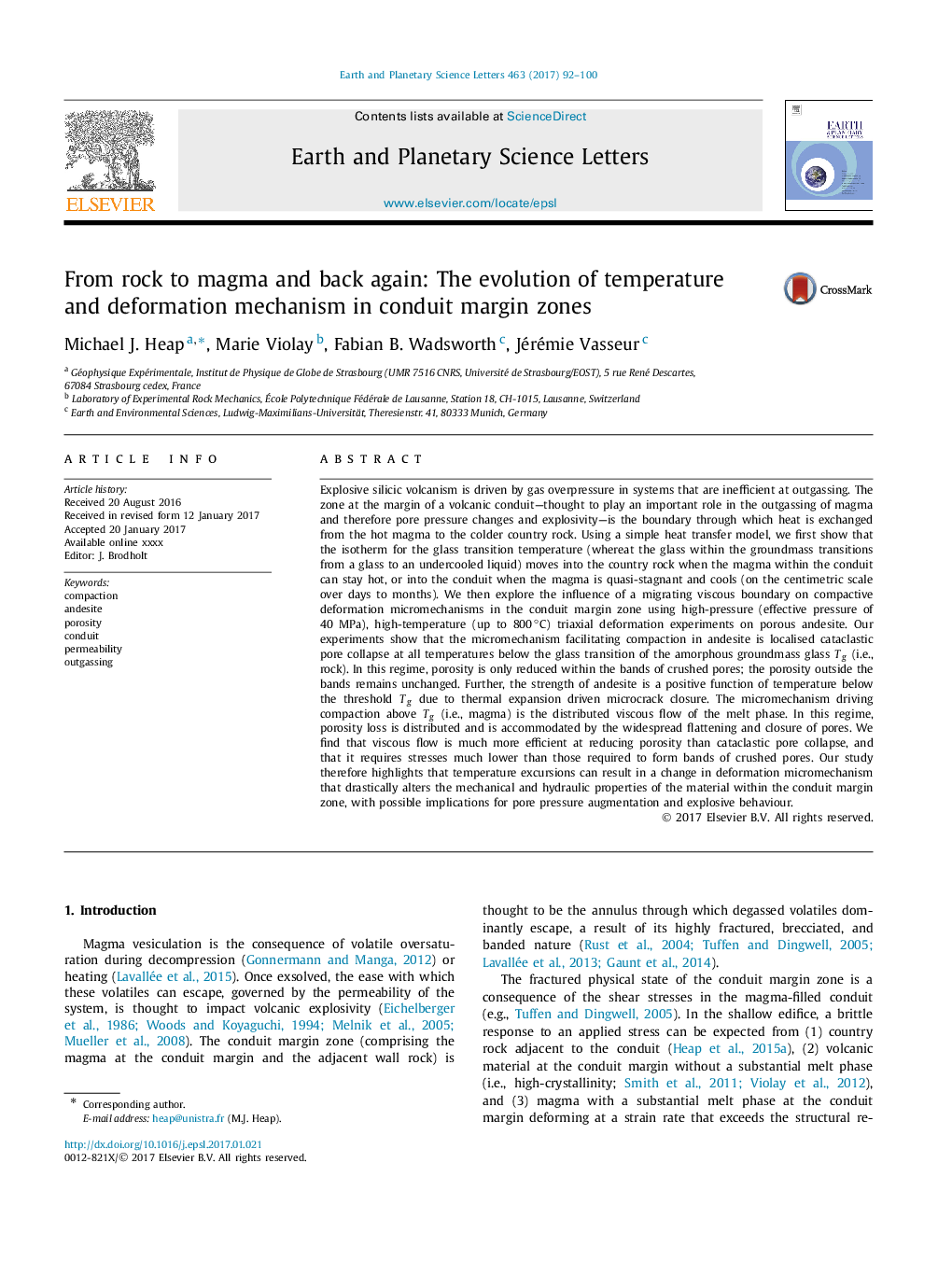| کد مقاله | کد نشریه | سال انتشار | مقاله انگلیسی | نسخه تمام متن |
|---|---|---|---|---|
| 5780094 | 1634693 | 2017 | 9 صفحه PDF | دانلود رایگان |
عنوان انگلیسی مقاله ISI
From rock to magma and back again: The evolution of temperature and deformation mechanism in conduit margin zones
ترجمه فارسی عنوان
از سنگ به ماگما و بازگشت به عقب: تکامل دما و تغییر مکان در مناطق حاشیه کانال
دانلود مقاله + سفارش ترجمه
دانلود مقاله ISI انگلیسی
رایگان برای ایرانیان
کلمات کلیدی
تراکم آندزیت، تخلخل، مجرا، نفوذپذیری، بی نظمی،
موضوعات مرتبط
مهندسی و علوم پایه
علوم زمین و سیارات
علوم زمین و سیاره ای (عمومی)
چکیده انگلیسی
Explosive silicic volcanism is driven by gas overpressure in systems that are inefficient at outgassing. The zone at the margin of a volcanic conduit-thought to play an important role in the outgassing of magma and therefore pore pressure changes and explosivity-is the boundary through which heat is exchanged from the hot magma to the colder country rock. Using a simple heat transfer model, we first show that the isotherm for the glass transition temperature (whereat the glass within the groundmass transitions from a glass to an undercooled liquid) moves into the country rock when the magma within the conduit can stay hot, or into the conduit when the magma is quasi-stagnant and cools (on the centimetric scale over days to months). We then explore the influence of a migrating viscous boundary on compactive deformation micromechanisms in the conduit margin zone using high-pressure (effective pressure of 40 MPa), high-temperature (up to 800â°C) triaxial deformation experiments on porous andesite. Our experiments show that the micromechanism facilitating compaction in andesite is localised cataclastic pore collapse at all temperatures below the glass transition of the amorphous groundmass glass Tg (i.e., rock). In this regime, porosity is only reduced within the bands of crushed pores; the porosity outside the bands remains unchanged. Further, the strength of andesite is a positive function of temperature below the threshold Tg due to thermal expansion driven microcrack closure. The micromechanism driving compaction above Tg (i.e., magma) is the distributed viscous flow of the melt phase. In this regime, porosity loss is distributed and is accommodated by the widespread flattening and closure of pores. We find that viscous flow is much more efficient at reducing porosity than cataclastic pore collapse, and that it requires stresses much lower than those required to form bands of crushed pores. Our study therefore highlights that temperature excursions can result in a change in deformation micromechanism that drastically alters the mechanical and hydraulic properties of the material within the conduit margin zone, with possible implications for pore pressure augmentation and explosive behaviour.
ناشر
Database: Elsevier - ScienceDirect (ساینس دایرکت)
Journal: Earth and Planetary Science Letters - Volume 463, 1 April 2017, Pages 92-100
Journal: Earth and Planetary Science Letters - Volume 463, 1 April 2017, Pages 92-100
نویسندگان
Michael J. Heap, Marie Violay, Fabian B. Wadsworth, Jérémie Vasseur,
